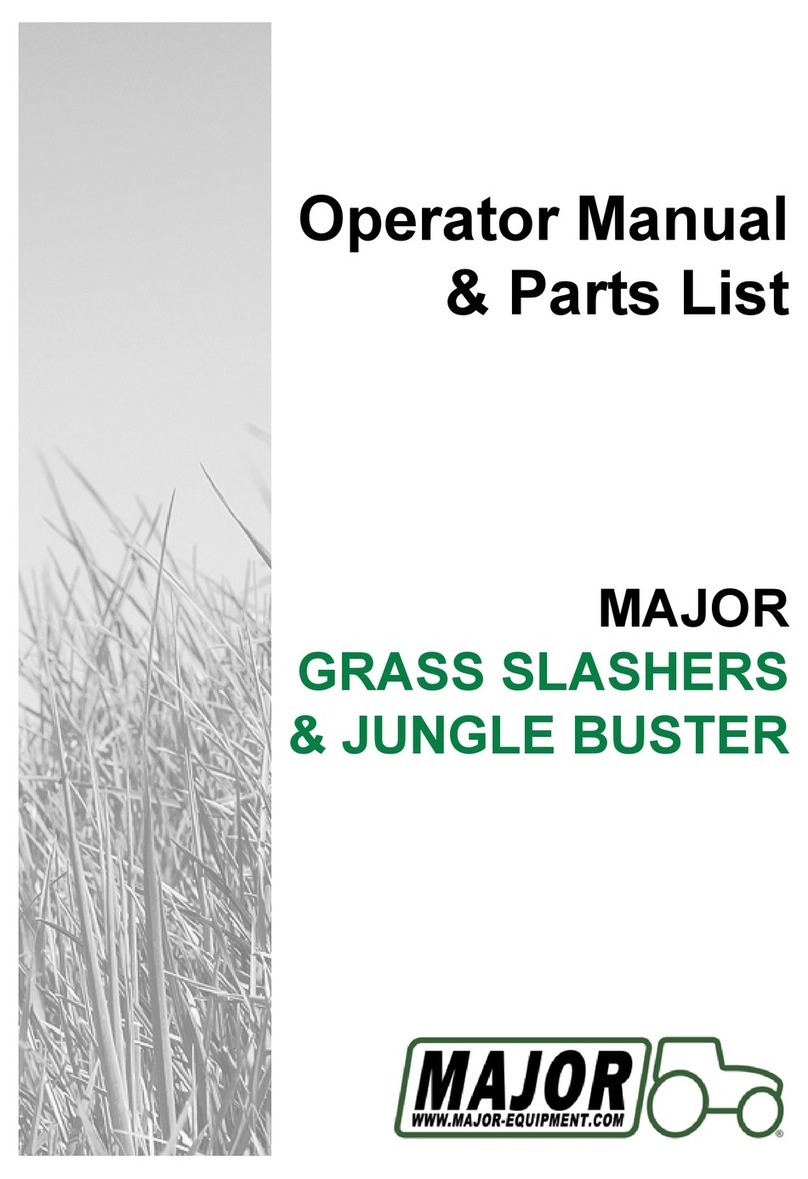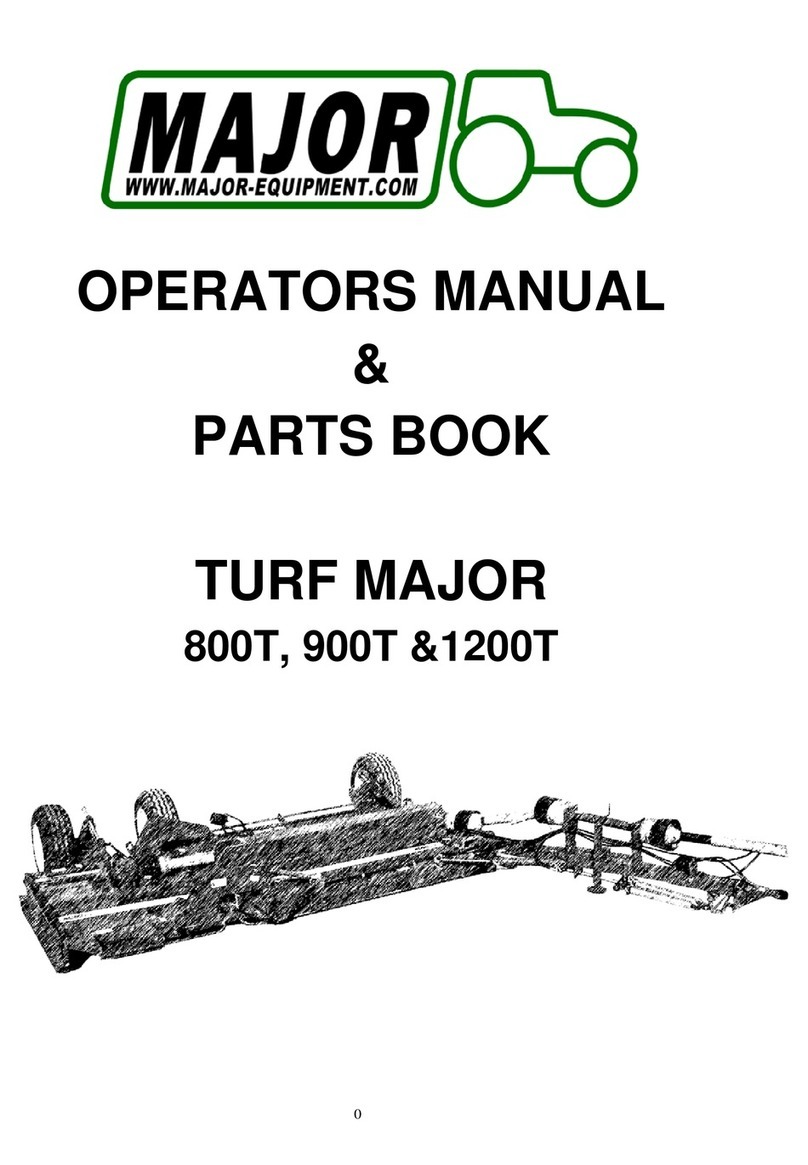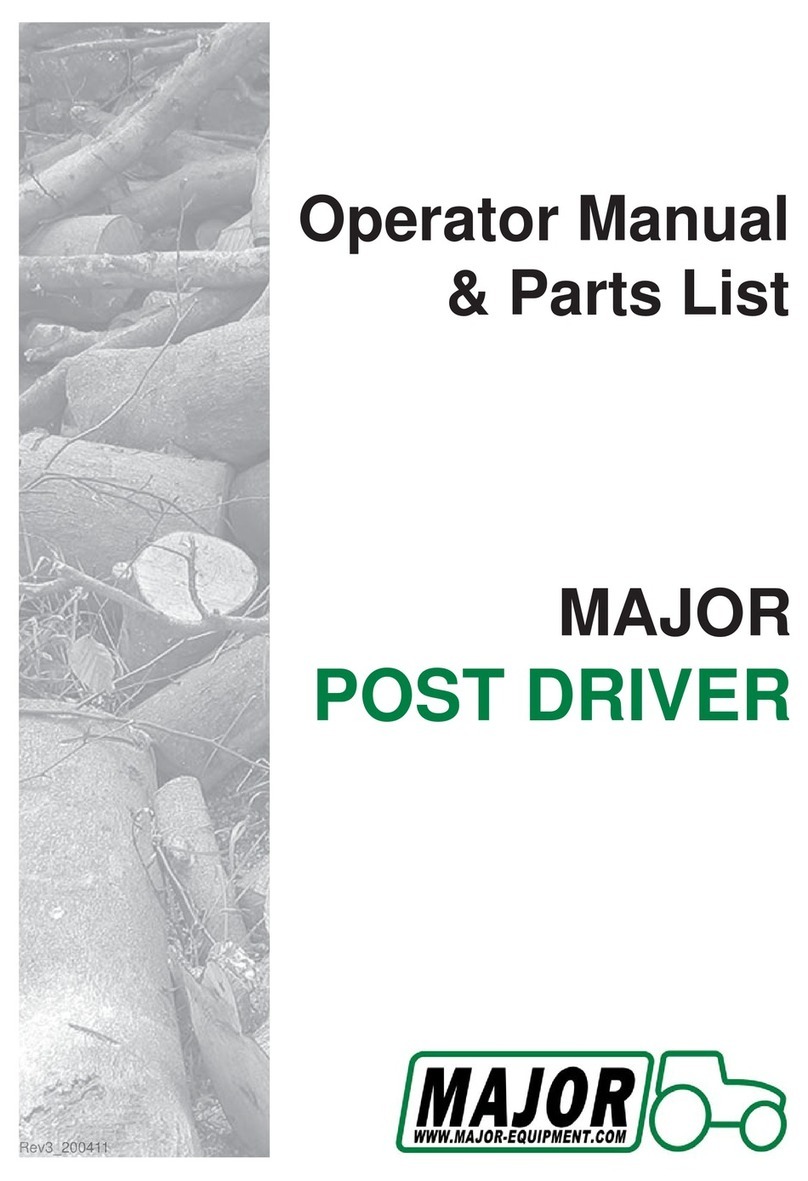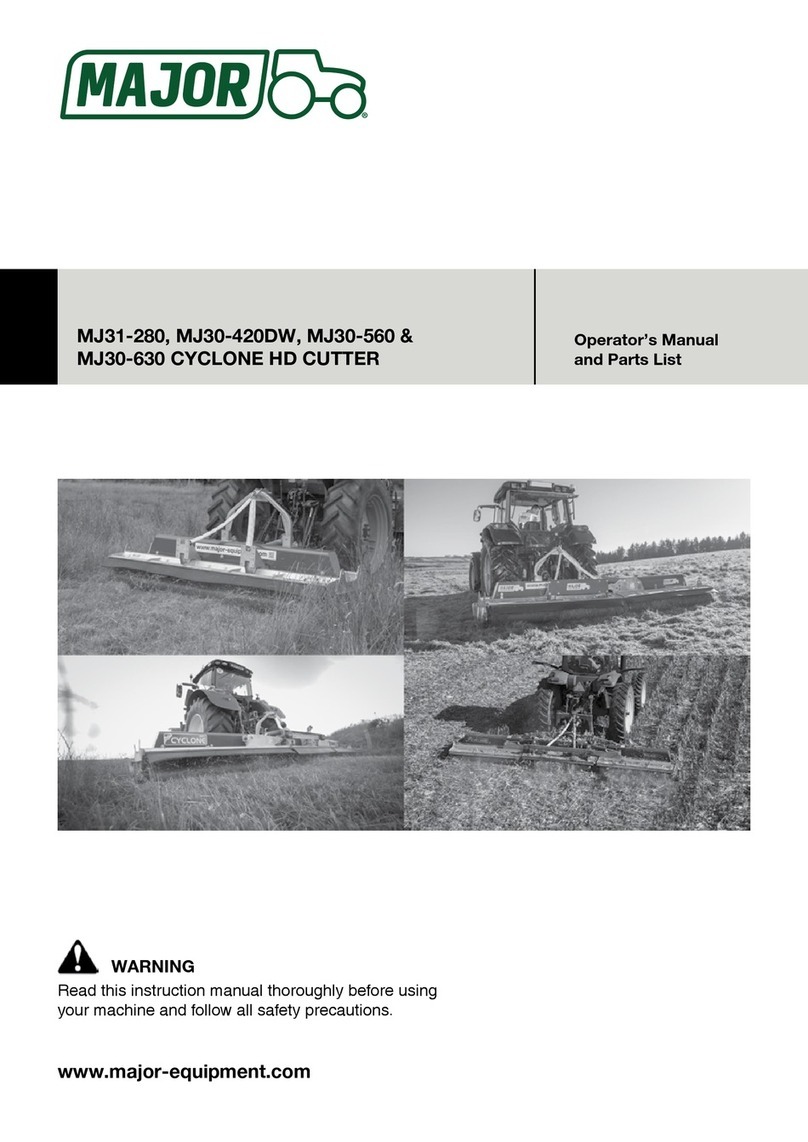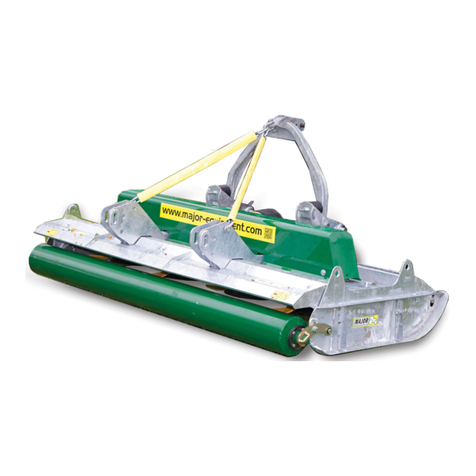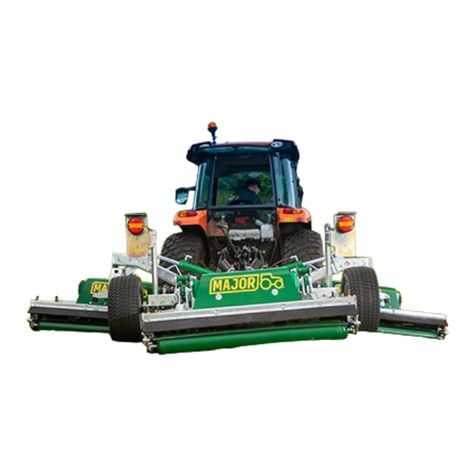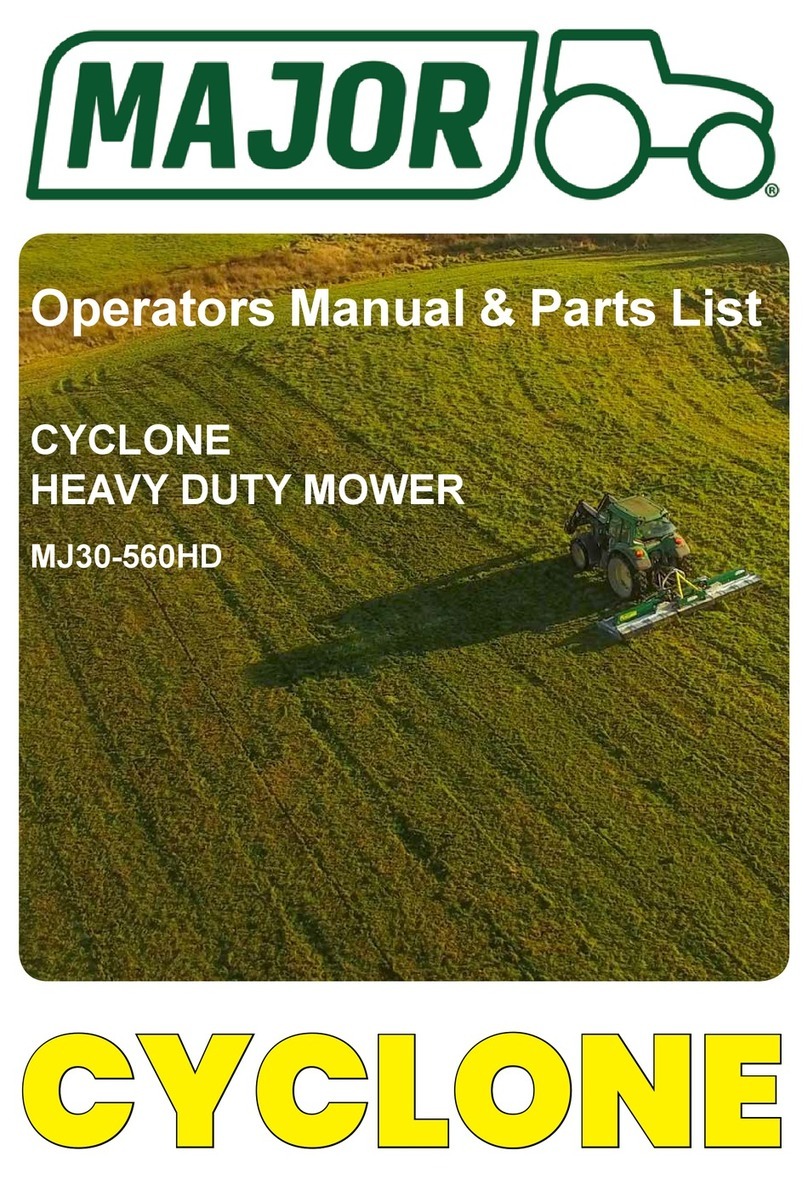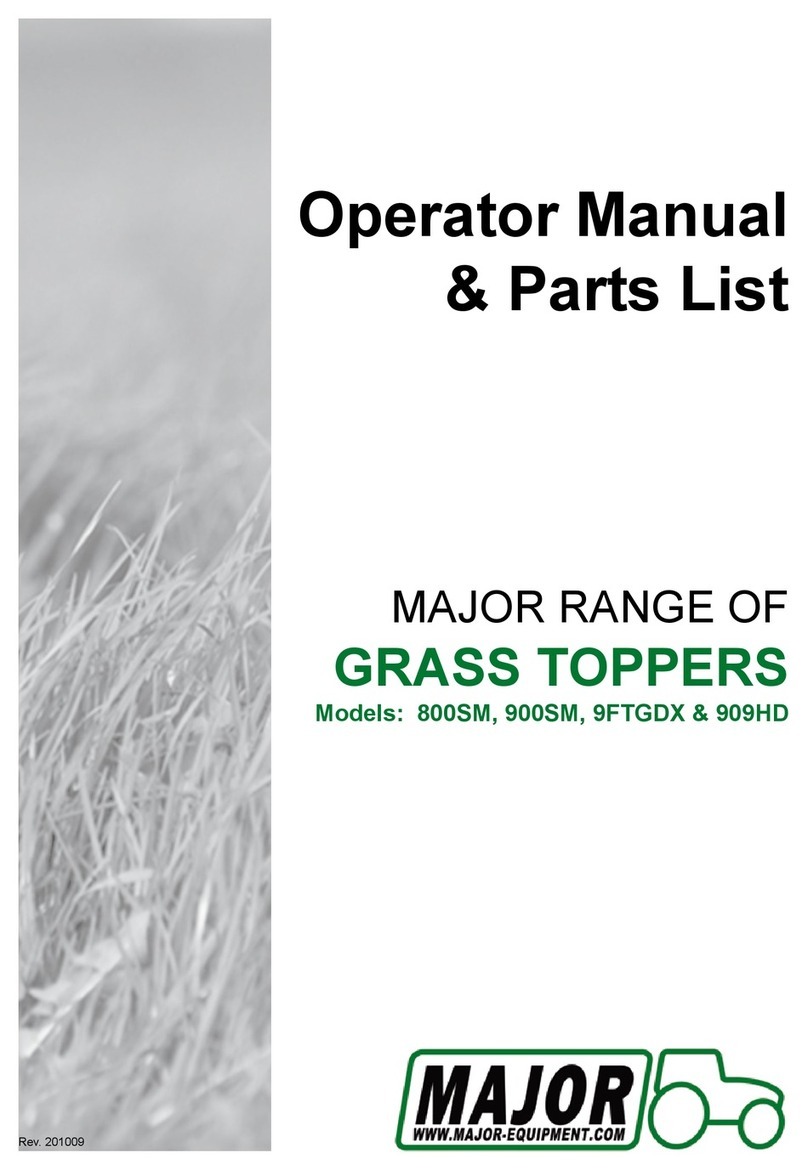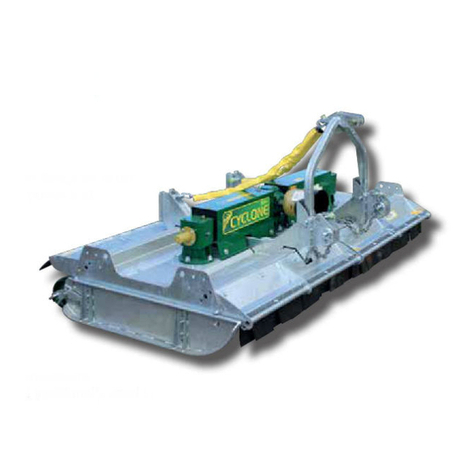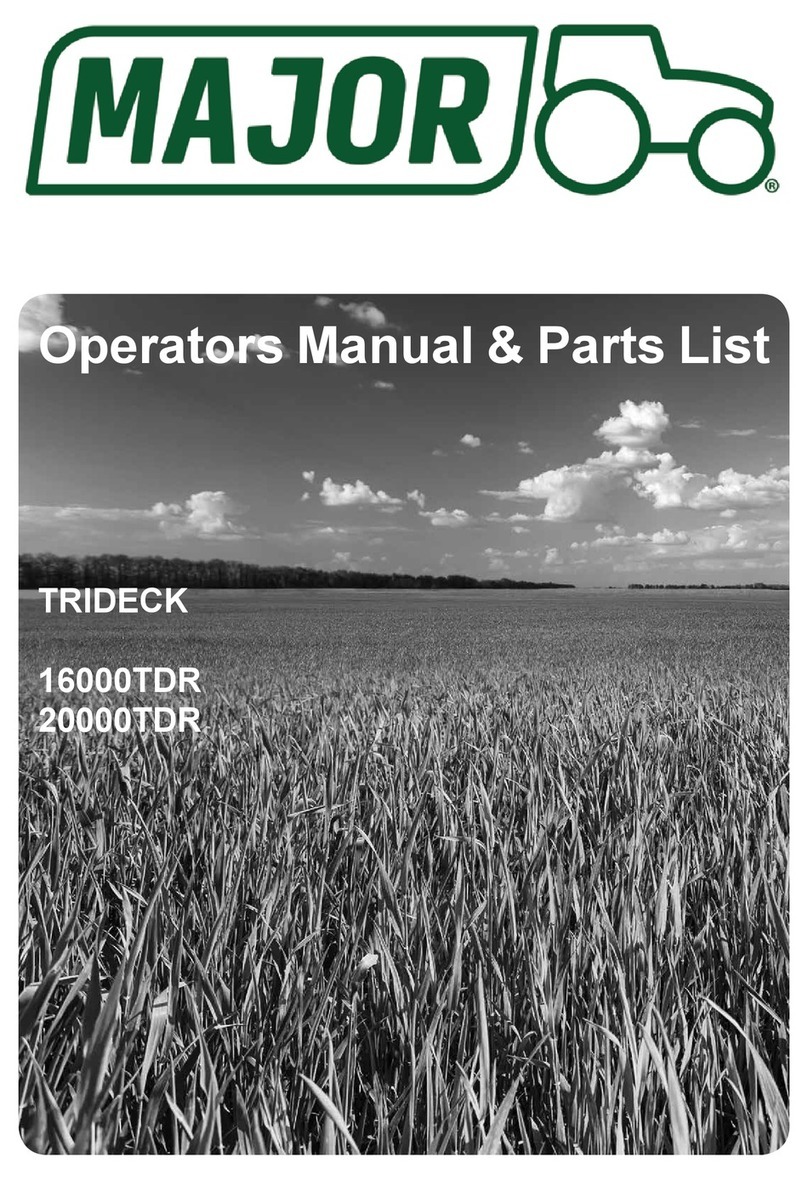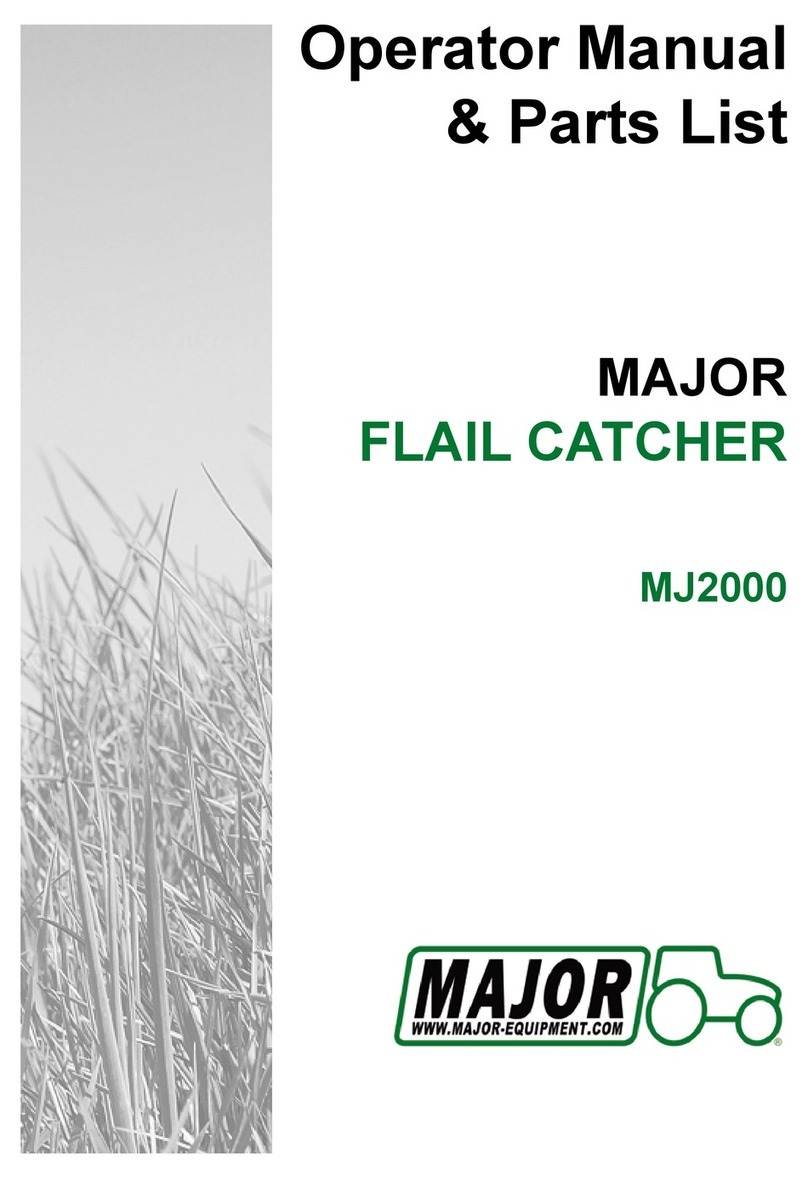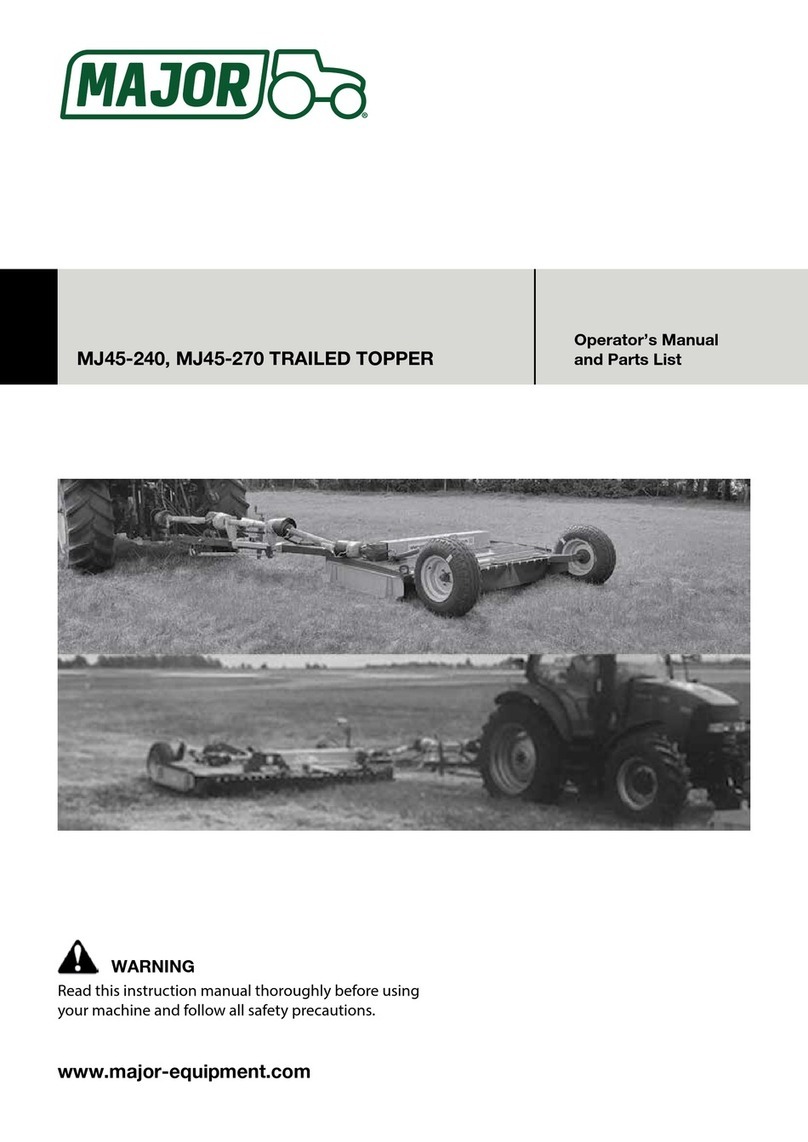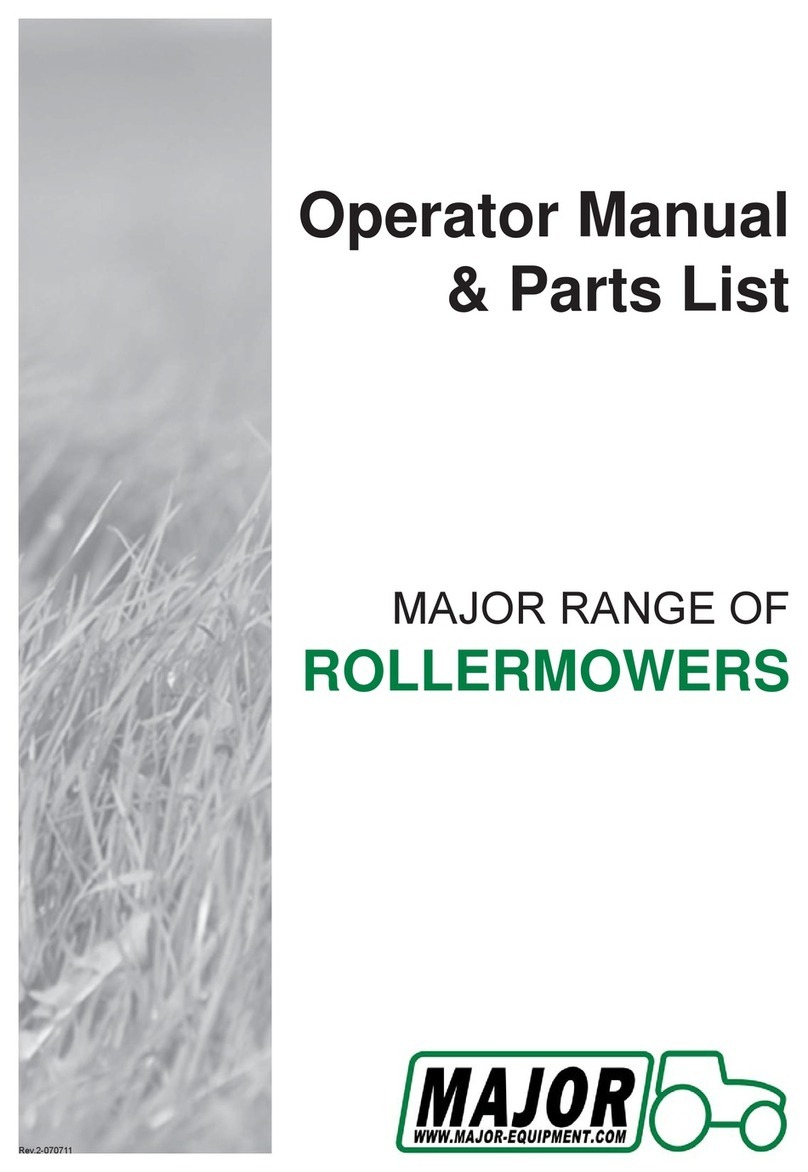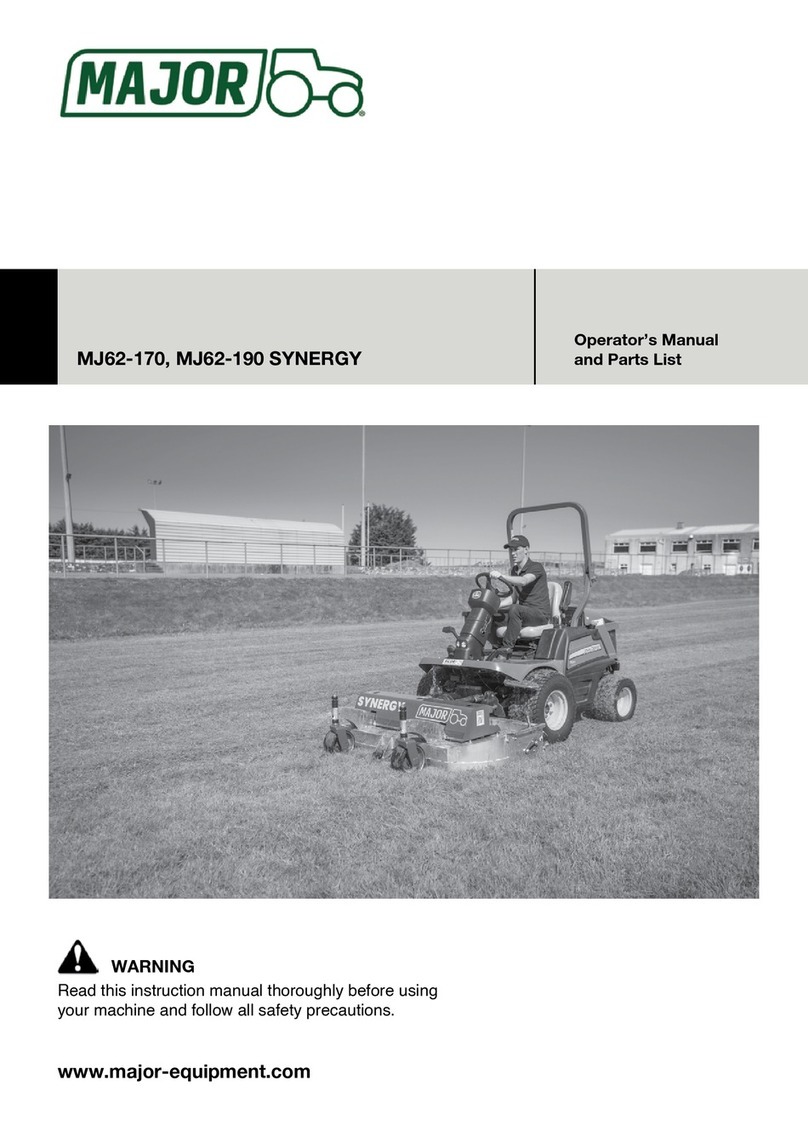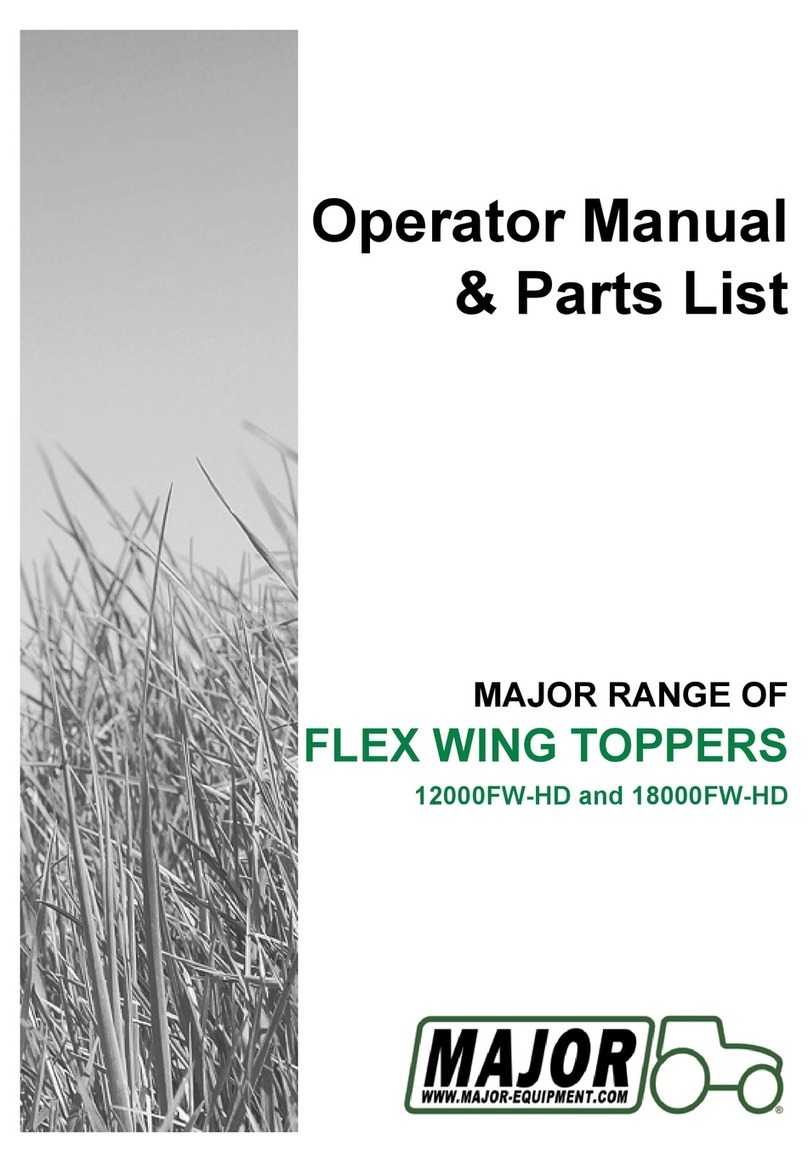
6www.major-equipment.com
Operating Safely
List of Dangers Associated with Operating the Pump
In the Common Market countries, the installation must comply with directive 2006/42/CE and subsequent modications,
while in the other countries it must comply with the safety regulations of the country.
This Rotary blades vacuum pump has been designed to create a vacuum or pressure inside a tank connected to it.
Under no circumstances must liquids, dust or any kind of solid matter enter the Rotary blades
vacuum pump because they could cause it to break. Therefore it is necessary to equip the system
with safety valves.
The use of the Rotary blades vacuum pump for any purpose other than that specied above is absolutely
forbidden, not provided for by the manufacturer and therefore highly dangerous. Do not use the Rotary blades vacuum
pump to handle ammable and/or explosive liquids and materials or for materials that give off ammable gasses. Read
This Manual Before Using The Suction Unit/Compressor Do not use the rotary blades vacuum pump in a potentially
explosive atmosphere. Never remove the guards tted on the Rotary blades vacuum pump and always check their
efciency every time the machine is used. Any work on the machine must be carried out while it is not running.
• Failure to comply with the instructions given in this manual may lead to the following dangers:
• Danger of being crushed by the Rotary blades vacuum pump mass during handling and transport;
• Danger of getting entangled in the shaft transmission parts if the necessary guards are removed;
• Heat dangers due to the temperatures that can be reached by the Rotary blades vacuum pump;
• Acoustic danger due to the noise generated and to failure to use personal means of protection;
• Danger to operator’s hands during testing with suction and delivery tubes detached from the pump;
• Danger of abrasion from the shaft of the hydraulic pump support if the Rotary blades vacuum pump is operated
with the hydraulic pump removed;
• Danger of projection of uid and solid materials owing to an heavy breakage of the Rotary blades vacuum pump.
• Danger of asphyxiation due to methane gases
• Danger of projection of liquid or gas through partially blocked gate valves
• Danger of projection of hydraulic oil through faulty ttings or damaged hose
Users should become thoroughly familiar with the contents of this manual before using, servicing and mounting the
implement to the tractor and all other pertinent operations. Never wear jewellery, loose clothing such as ties, scarves,
belts, unbuttoned jackets or dungarees with open zips which could become caught up in moving parts.
Always wear approved garments complying with accident prevention provisions such as non-slip shoes, ear muffs,
goggles and gauntlets. Wear a jacket with reecting stickers if the implement is used near public highways.
Consult your retailer, the Labour Health Service or your nearest equivalent authority for the information about the
current safety provisions and specic regulations with in order to ensure personal safety.
ALWAYS DISENGAGE PTO, SWITCH OFF THE TRACTOR ENGINE AND ENGAGE THE PARKING BRAKE
BEFORE MAKING ADJUSTMENT TO THE MACHINE.
NEVER PLACE LIMBS NEAR TURNING COMPONENTS OF THE MACHINE. MOVING PARTS CAN
REMAIN TURNING FOR UP TO 1 MINUTE AFTER DISENGAGING PTO.
Workstation
The operator must remain seated while working the machine. Always ensure the PTO has been turned off and the
parking brake applied before leaving the tractor cab. The operator must always apply the parking brake, and turn off
the engine before leaving machine or carrying out maintenance.
NEVER OPERATE THE HYDRAULICS WITH THE TRACTOR SWITCHED OFF
Slips trips and falls Hazard
Slips and falls often result from:
1. Slippery footing on the ground
2. Cluttered steps and work platforms.
The potential for slips and falls can be greatly reduced by using good judgement and practicing good housekeeping on
and around equipment.
